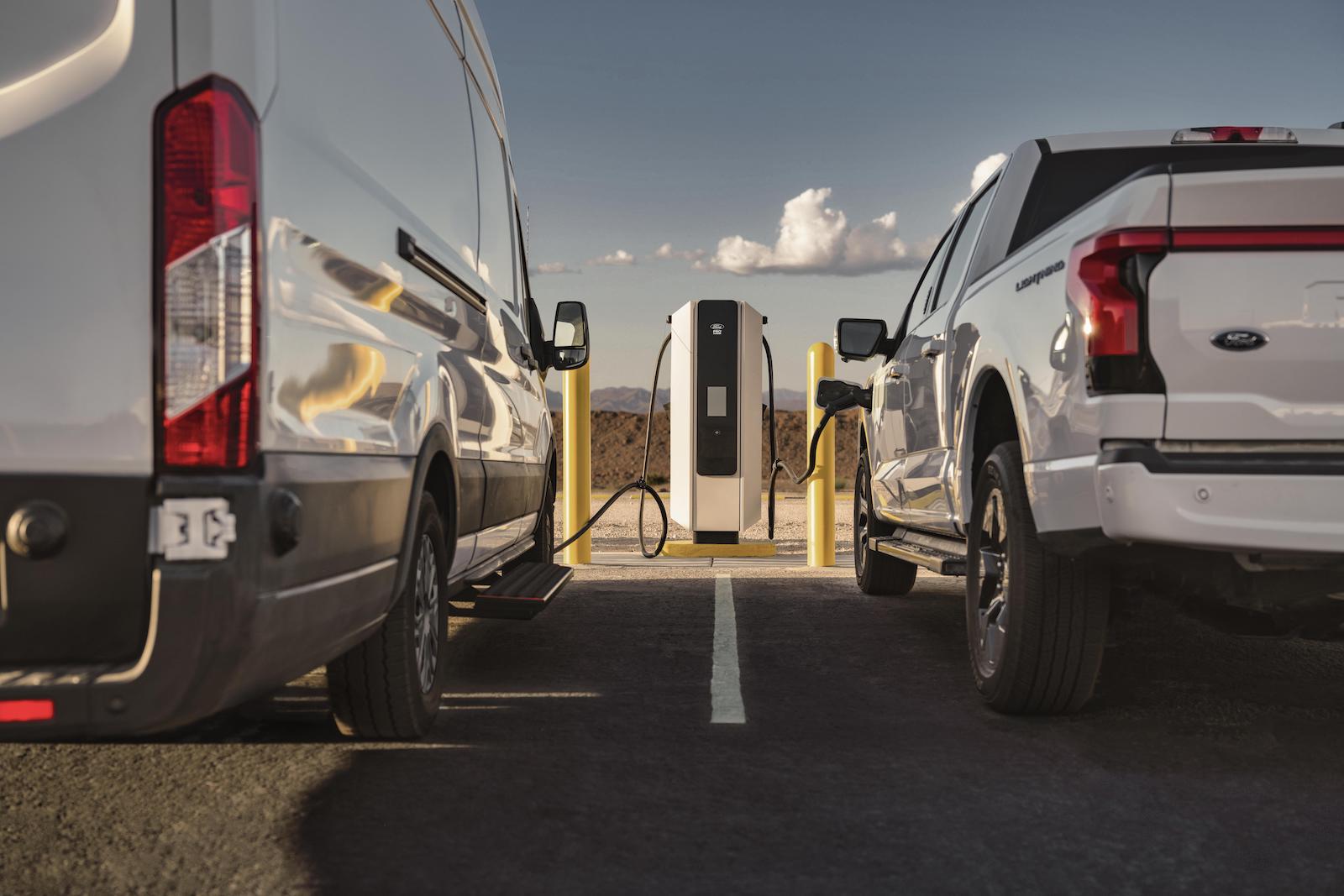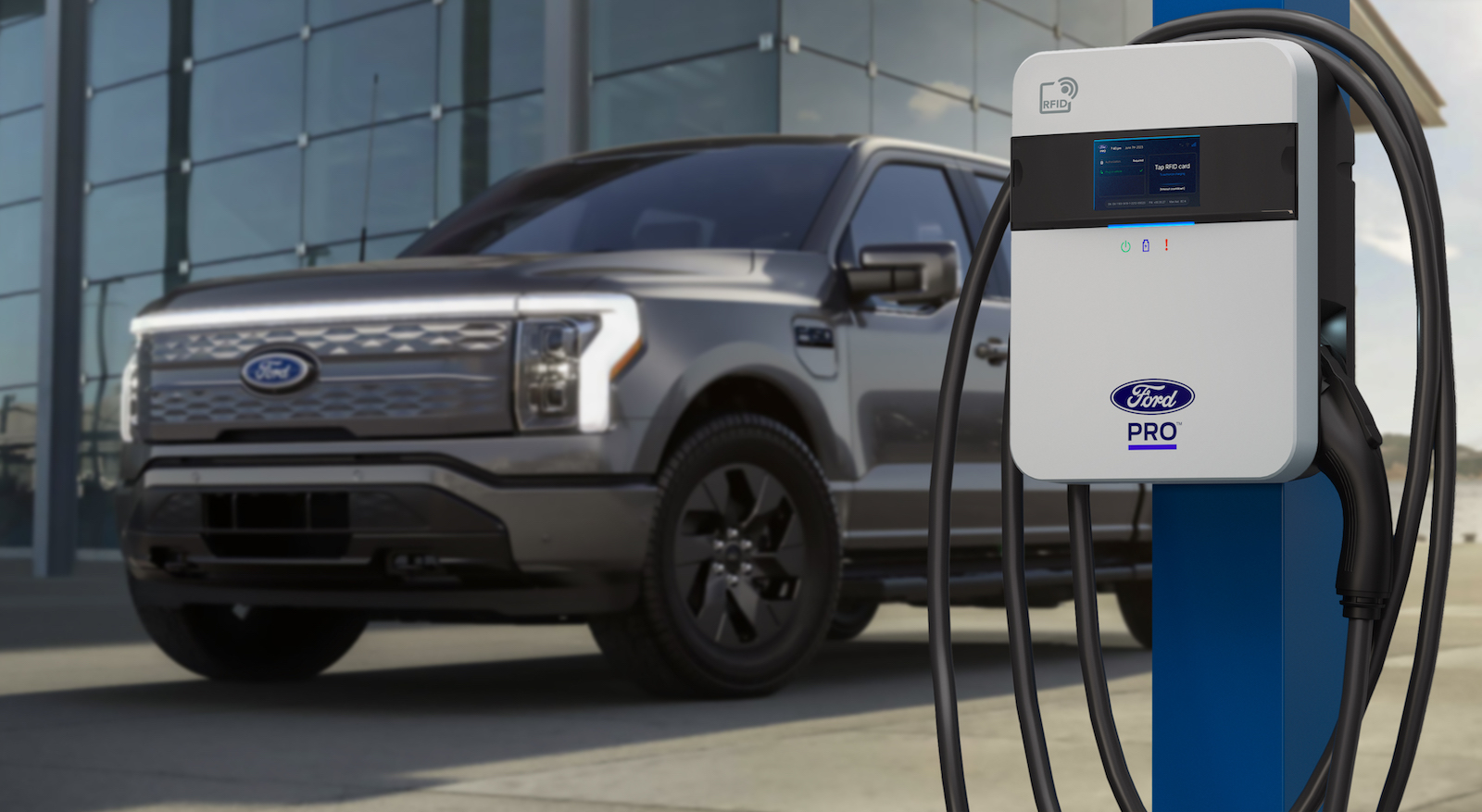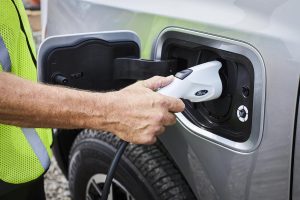For many potential EV buyers, the real worry isn’t range but charging. More precisely: finding a place to plug in. Ford is partnering with Xcel Energy, an energy provider serving nearly 4 million electric customers in eight states. Together, they’re launching a program to install 30,000 heavily subsidized EV chargers for commercial fleets by 2030.

Ford Pro and Xcel Energy are working together to limit range anxiety by installing 30,000 EV charging ports for business fleets by 2030.wwwwwww
While range anxiety may be a major concern for retail EV owners, it’s charger anxiety that worries potential commercial operators of EV fleets, according to a senior Ford executive. Industry data suggest that commercial customers operating vehicles like the Ford eTransit van and F-150 Lightning rarely tend to exceed the range of those vehicles during routine use.
“For most fleets today, the biggest concern isn’t range anxiety,” said Dave Prusinski, General Manager of Integrated Services for Ford Pro. “It’s the lack of a charging infrastructure.”
That’s where a new partnership between Ford and Xcel Energy could come in, the two companies announced on Tuesday. Together, they’ve launched what’s been dubbed the 30×30 initiative. The goal is to put 30,000 subsidized charger ports into operation for commercial operators by 2030.
“A “crucial bridge”
This will be “a crucial bridge to foster and facilitate the transition” to battery-electric vehicles by fleets and other commercial and government operators, added Amanda Rome, Executive Vice President and Chief Customer Officer for Minneapolis-based Xcel Energy,
Working with the automaker – which will supply its Ford Pro chargers, Xcel said it will “offset…most upfront costs” for both the EV charging equipment and installation.

This will be “a crucial bridge to foster and facilitate the transition” to battery-electric vehicles by fleets and other commercial and government operators
The Ford Pro hardware is available in both 240-volt Level 2 form for overnight charging, as well as 180 and 240 kilowatt quick chargers.
How it works
The automaker also will provide various software solutions, such as its Ford Pro Telematics which allow commercial customers to remotely track an EVs status and even help pick the best time of day to charge based on the variable charging rates many electric utilities now are turning to. Time-of-day rates are meant to shift users to off-peak times to relieve the strain on generating capacity, particular at peak times of the year.
The average commercial customer is expected to need the installation of 5.7 EV charging ports, said Xcel’s Rome.
The 30×30 program will provide chargers at fleet depots and other commercial locations. They will not be available for use by the general public. But Ford has announced other programs aimed at increasing the number of public chargers in the U.S., as well.
Initial launch in 2 states, but more to follow
By the end of the decade, if the partnership meets its target, she added, the switch to EVs using the 30×30 program will reduce carbon dioxide emissions by an estimate 5 million tons annually.

A simple management solution for electrified fleets of all makes and sizes, Ford Pro Charging lets customers switch between charging at depots, employee homes, and public charging stations
Xcel serves customers in eight states. Initially, the subsidized program will roll out in Colorado and Wisconsin. With regulatory approval, added Rome, the goal is to expand into Michigan, Minnesota, New Mexico, North Dakota, South Dakota and Texas.
Big savings
Utilities in a number of states now offer various subsidies to help win over new customers to battery-electric vehicles. In Michigan, for example, qualified buyers using service from Detroit-based DTE can get a $500 rebate for buying an EV and installing a charger.
The 30×30 program could increase the subsidies substantially, considering that some commercial customers could spend thousands, even tens of thousands of dollars installing EV charging equipment.
The partnership, said Ford’s Prusinski, could serve as a “template for future interaction” with other energy providers across the U.S.



0 Comments